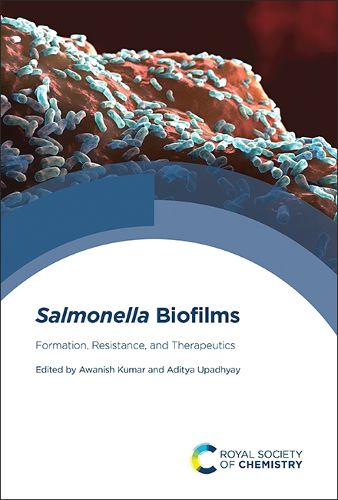Readings Newsletter
Become a Readings Member to make your shopping experience even easier.
Sign in or sign up for free!
You’re not far away from qualifying for FREE standard shipping within Australia
You’ve qualified for FREE standard shipping within Australia
The cart is loading…






Up to 80% of chronic and recurrent human bacterial infections are caused by bacterial biofilms, which are extremely hard to cure. Salmonella is an especially interesting pathogen because of its ability to cause diseases through a variety of mechanisms and form complex communities in biofilms.
Due to the difficulty of treatment, investigation of alternatives to conventional antibiotics is an important direction of research in combating biofilm formation including natural products, nanoparticles, matrix degrading enzymes or combinatorial enzymes, quorum quenching, and novel combinations with other therapies such as PDT and surgical intervention.
This book covers the process of Salmonella infection and mechanisms of biofilm formation, current and emerging therapeutic management strategies against Salmonella biofilms as well as the limitations of existing treatment options. It also covers the complex relationship between biofilm infection and other co-morbidities.
The book will be of interest to advanced students and researchers interested in antimicrobial resistance, bacteriology, antibiotic drug development, and related research.
$9.00 standard shipping within Australia
FREE standard shipping within Australia for orders over $100.00
Express & International shipping calculated at checkout
Up to 80% of chronic and recurrent human bacterial infections are caused by bacterial biofilms, which are extremely hard to cure. Salmonella is an especially interesting pathogen because of its ability to cause diseases through a variety of mechanisms and form complex communities in biofilms.
Due to the difficulty of treatment, investigation of alternatives to conventional antibiotics is an important direction of research in combating biofilm formation including natural products, nanoparticles, matrix degrading enzymes or combinatorial enzymes, quorum quenching, and novel combinations with other therapies such as PDT and surgical intervention.
This book covers the process of Salmonella infection and mechanisms of biofilm formation, current and emerging therapeutic management strategies against Salmonella biofilms as well as the limitations of existing treatment options. It also covers the complex relationship between biofilm infection and other co-morbidities.
The book will be of interest to advanced students and researchers interested in antimicrobial resistance, bacteriology, antibiotic drug development, and related research.